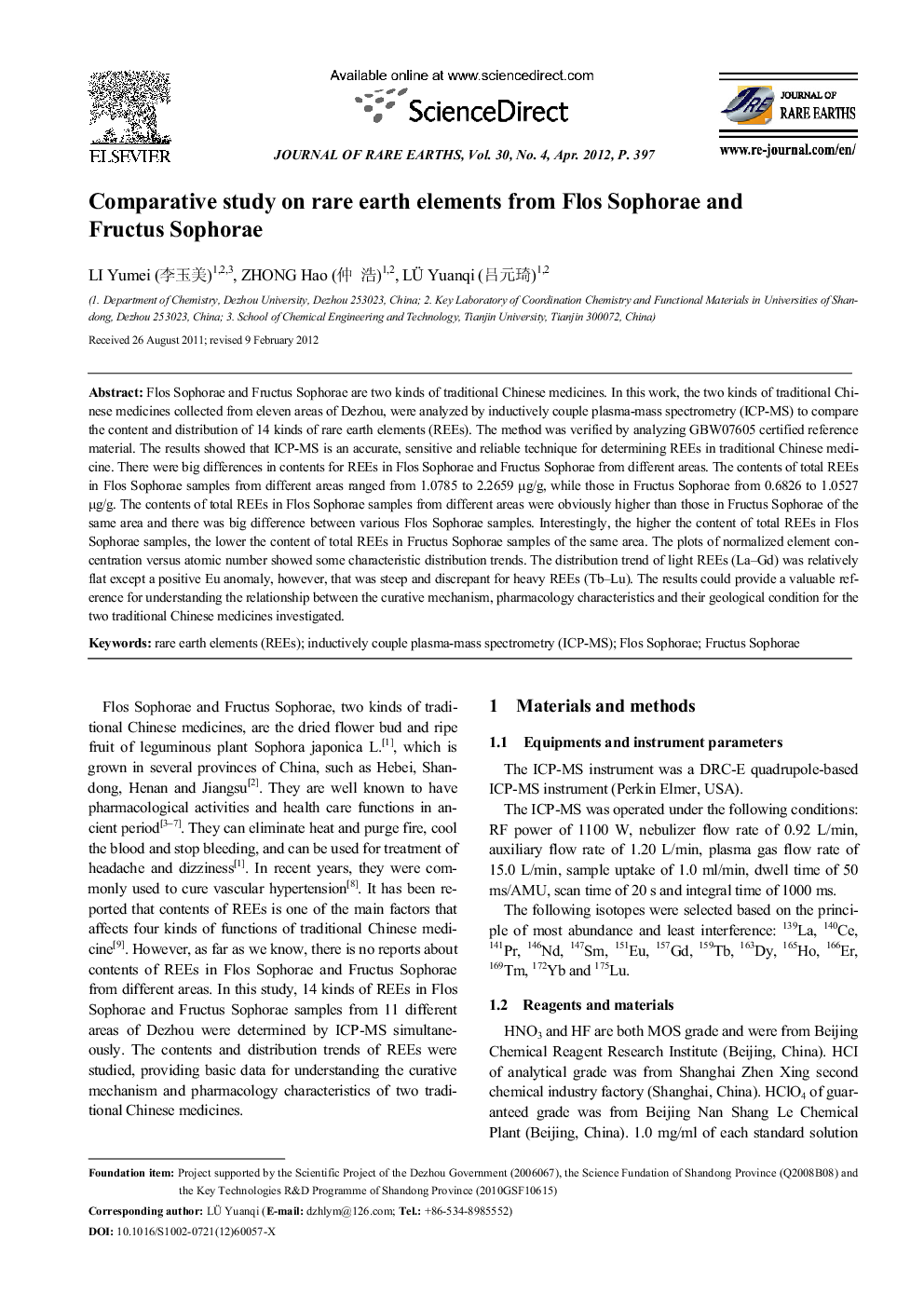| Article ID | Journal | Published Year | Pages | File Type |
|---|---|---|---|---|
| 1260330 | Journal of Rare Earths | 2012 | 4 Pages |
Flos Sophorae and Fructus Sophorae are two kinds of traditional Chinese medicines. In this work, the two kinds of traditional Chinese medicines collected from eleven areas of Dezhou, were analyzed by inductively couple plasma-mass spectrometry (ICP-MS) to compare the content and distribution of 14 kinds of rare earth elements (REEs). The method was verified by analyzing GBW07605 certified reference material. The results showed that ICP-MS is an accurate, sensitive and reliable technique for determining REEs in traditional Chinese medicine. There were big differences in contents for REEs in Flos Sophorae and Fructus Sophorae from different areas. The contents of total REEs in Flos Sophorae samples from different areas ranged from 1.0785 to 2.2659 μg/g, while those in Fructus Sophorae from 0.6826 to 1.0527 μg/g. The contents of total REEs in Flos Sophorae samples from different areas were obviously higher than those in Fructus Sophorae of the same area and there was big difference between various Flos Sophorae samples. Interestingly, the higher the content of total REEs in Flos Sophorae samples, the lower the content of total REEs in Fructus Sophorae samples of the same area. The plots of normalized element concentration versus atomic number showed some characteristic distribution trends. The distribution trend of light REEs (La–Gd) was relatively flat except a positive Eu anomaly, however, that was steep and discrepant for heavy REEs (Tb–Lu). The results could provide a valuable reference for understanding the relationship between the curative mechanism, pharmacology characteristics and their geological condition for the two traditional Chinese medicines investigated.
